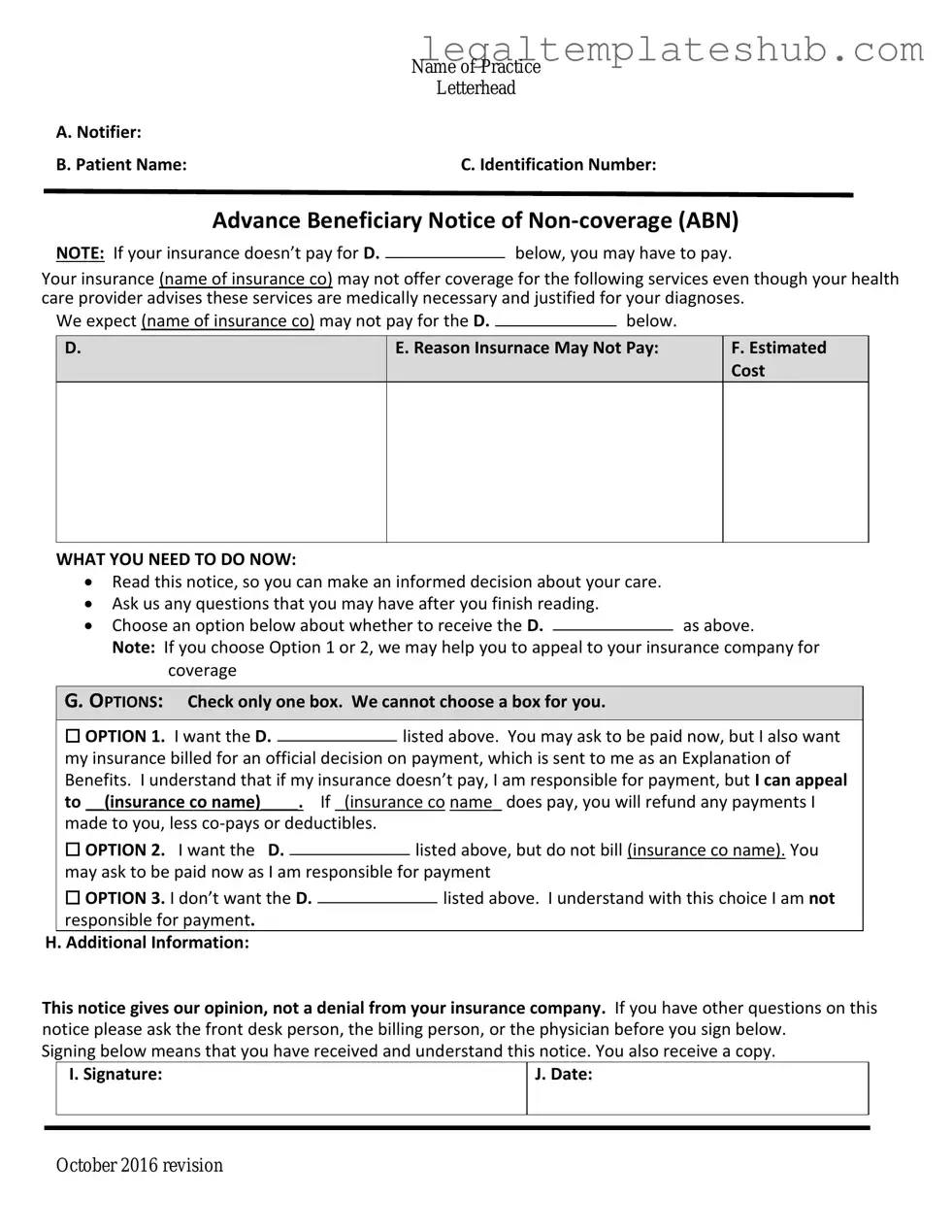Blank Advance Beneficiary Notice of Non-coverage PDF Form
The Advance Beneficiary Notice of Non-coverage (ABN) is a crucial document that informs Medicare beneficiaries about services that may not be covered by Medicare. This form allows patients to make informed decisions regarding their healthcare options and potential out-of-pocket costs. Understanding the ABN is essential for navigating the complexities of Medicare coverage, so be sure to fill out the form by clicking the button below.
Access Editor
